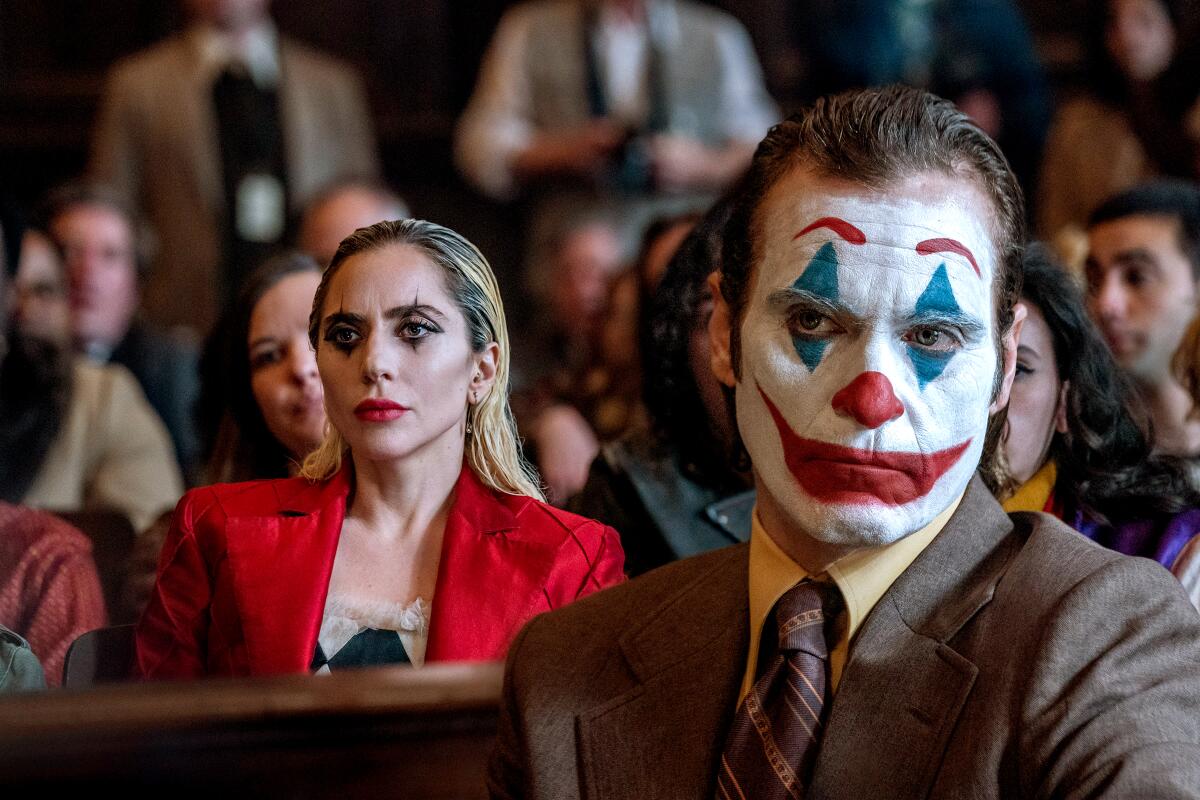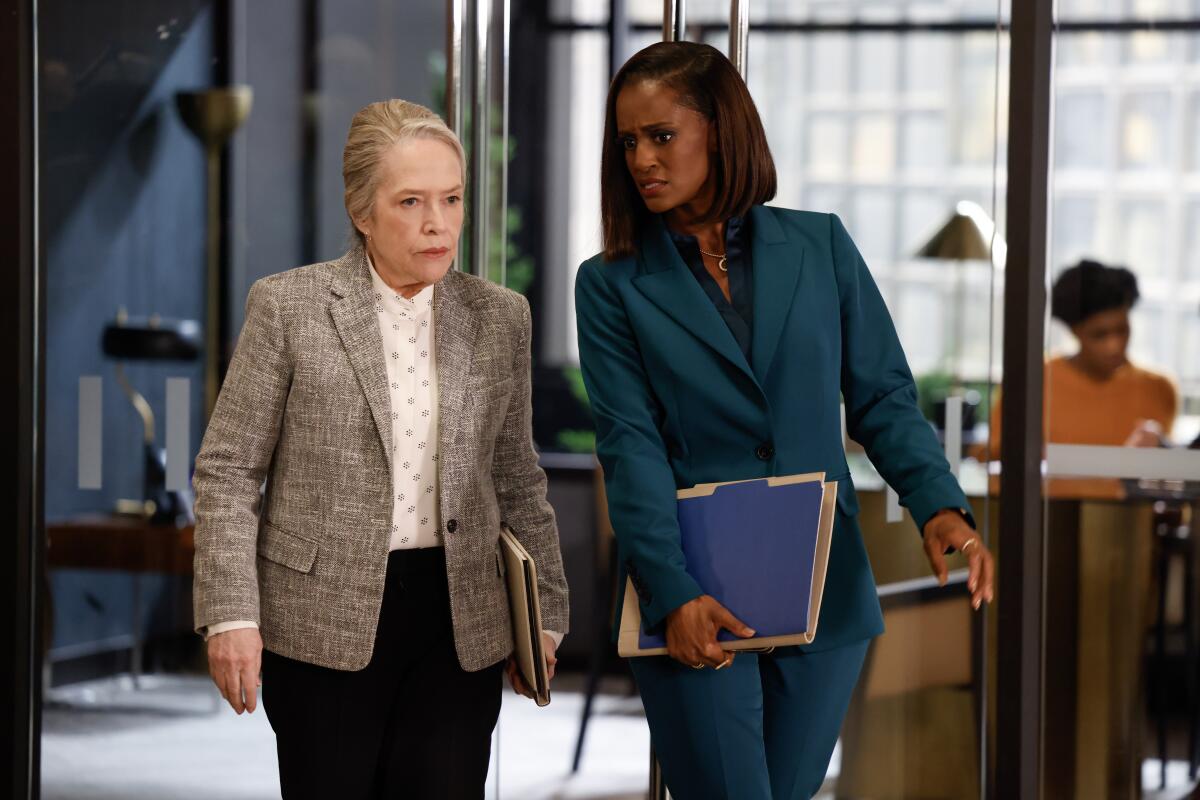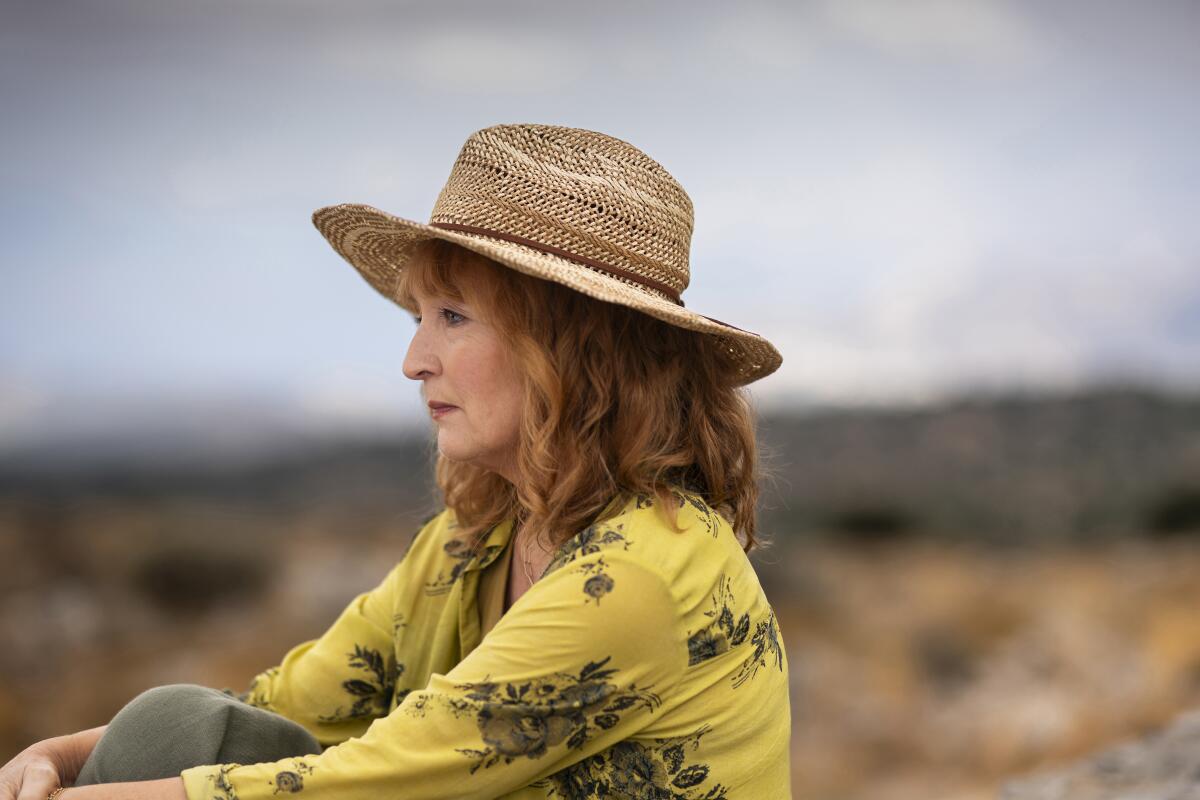‘Chicago Med’ boss on what’s changed most about medical dramas in the last 30 years

Welcome to Screen Gab, the newsletter for everyone who never tires of a good, solid medical procedural.
Diagnosing and treating (sometimes gnarly) ailments has always been the bread-and-butter of the genre, but exactly what issues occur onscreen and how they’re solved has changed dramatically since the days of “ER,” according to “Chicago Med” showrunner Allen MacDonald, who joins us for this week’s Guest Spot: “You can now depict stories that felt more like science fiction before.”
Also in Screen Gab no. 152, “Chef’s Table: Noodles” subject and L.A. chef Evan Funke gives his advice for at-home pasta-making, plus viewing recommendations for your weekend.
You are reading Screen Gab newsletter
Sign up to get recommendations for the TV shows and streaming movies you can’t miss, plus exclusive interviews with the talent behind your favorite titles, in your inbox every Friday
You may occasionally receive promotional content from the Los Angeles Times.
ICYMI
Must-read stories you might have missed

5 unforgettably bad sequels to stream after you see ‘Joker: Folie à Deux’: The crash and burn of the sequel to the 2019 blockbuster “Joker” is the latest in a long line of follow-ups to hit films that have bombed. Here are five to stream now.
All hail ‘9-1-1’s’ ‘Bee-nado’ event and the power of network procedurals: With its “Bee-nado” event, “9-1-1” has channeled the killer bee hysteria of the 1990s and campy made-for-TV disaster movies to remind us why we love broadcast network TV.
‘The Californians’ and 44 more ‘SNL’ sketches L.A. Times readers love: After asking celebrities, we surveyed Times readers about their top “Saturday Night Live” sketches of all time. Here are 45 of the most popular selections.
TV used to bore Kristin Scott Thomas. How ‘Slow Horses’ changed her mind: “You get to 60 and it’s slim pickings,” the actor says of the “beauty-based” entertainment industry — but with the Apple TV+ spy drama, she keeps finding new ways to shine.
Turn on
Recommendations from the film and TV experts at The Times

“Matlock” (CBS, Paramount+)
Here’s a phrase I never thought I’d write in the year 2024: “Matlock” is my favorite new show of the fall. From “Jane the Virgin” creator Jennie Snyder Urman, the CBS reboot of the legal procedural stars Oscar- and Emmy-winning actor Kathy Bates. But she’s not playing a direct replica of the memorable legal eagle made famous by Andy Griffith. In this reimagining, Bates plays a septuagenarian lawyer trying to reenter the workforce who just happens to be named Madeline “Maddy” Matlock (or is she? — more on that later). The character playfully acknowledges the name’s connection to the classic TV series several times in the pilot. But make no mistake, she’s just as clever at solving cases as her folksy predecessor with the Southern drawl. By the pilot’s end, which I won’t spoil, the character’s motivations to land a job at an esteemed Chicago law firm under this assumed identity become clear. And it’ll make you want to rewatch to see how the clues were there all along. The way Bates, unsurprisingly, brings power and subtle craftiness to every scene is such a joy to watch. Also, CBS, if you’re reading this, please give me an “Elsbeth”/“Matlock” crossover event. — Yvonne Villarreal
READ MORE: ‘Matlock’ is returning. Here’s who reimagined the character as a clever but underestimated woman

“Moonflower Murders” (PBS, Hulu)
If you love Lesley Manville (and who doesn’t), think editors are underappreciated (you should), or have a fictional detective you have fantasized about meeting, then Anthony Horowitz’s “Moonflower Murders” is the show for you. In a follow-up to the similarly formatted “Magpie Murders,” book editor Susan Ryeland (Manville), now living in Crete, returns to England to investigate yet another murder connected to the work of her deceased best-selling author Alan Conway (Conleth Hill). Once again, she is aided by Conway’s fictional detective Atticus Pünd (the great Tim McMullan). A murder mystery for murder-mystery lovers. — Mary McNamara
Guest spot
A weekly chat with actors, writers, directors and more about what they’re working on — and what they’re watching

In terms of broadcast medical dramas, NBC’s “Chicago Med” may still be the new(er) kid on the block — “Grey’s Anatomy” is on its 433rd episode — but 10 seasons is still serious business. Which means new showrunner Allen MacDonald is inheriting both a well-oiled machine and a passionate fan base with high expectations. With the third of four entries in Dick Wolf’s ultra-successful “Chicago” franchise back from summer hiatus, Macdonald stopped by to talk about what has changed most about the genre since he worked on “ER,” the show he always goes back to for inspiration and more. — Matt Brennan
What have you watched recently that you’re recommending to everyone you know?
“The Bear” [Hulu] and “Hacks” [Max]. Both are masterclasses in character development — fully fleshed out personalities bouncing off each other to comedic and dramatic effect that make me both laugh and cry, preferably at the same time. And both are a yummy binge if you find the time.
What’s your go-to “comfort watch,” the film or TV show you return to again and again?
“Halt and Catch Fire” [AMC+]. This is a show I only watched for the first time after reading an amazingly positive review of the series finale. I was late to the party, but truly … better late than never. “Halt and Catch Fire” chronicles the behind-the-scenes struggles of four characters trying to make their marks in the home computer revolution of the 1980s and early 1990s. They inspire, devastate, hate and, finally, learn to love each other as their restless creative spirits drive them to shoot for the stars, but they seem to learn the most about themselves and each other when they crash and burn. It’s a lovely meditation on creativity, success and failure. I religiously rewatch it every two years to remind myself of the rush of becoming fully immersed in the world of a show.
Your relationship with the medical drama dates back to your days on “ER.” In your view, what’s the biggest change to the genre in the time between that and now, joining “Chicago Med”?
Technology. Medicine has come so far in the last 30 years, so you can now depict stories that felt more like science fiction before, or have become far more common: in vitro fertilization (IVF), lung transplants, a leukemia patient’s T-cells being genetically modified to attack their cancer cells, laparoscopic surgeries — the list is endless. But technology has also brought us smartphones and social media, which both bring us together and drive us apart in ways that be a challenge to modern psychiatry, which we explore on “Chicago Med.”
Even for a viewer, the idea of starting a series in its 10th season can be daunting. What’s that like as a showrunner?
Joining a series in its 10th season is definitely daunting, but I would venture to say it’s much more manageable than joining a first-season show. New shows have the added challenge of trying to figure out what they are and what they’re trying to say in a very short amount of time. Sometimes they work; most times they don’t. But a 10th-season show knows exactly what it is because its world and characters are already firmly established. The foremost challenge of coming into “Chicago Med’s” 10th season is to find fresh and innovative ways to inject some storytelling energy that tugs the heartstrings while simultaneously depicting compelling medical mysteries. The sweet spot is when our characters come to those stories with different but completely valid arguments that put them in direct conflict. But it’s more about fine-tuning and taking some creative risks than it is about totally reinventing the show. You can’t and shouldn’t fundamentally change the DNA of the world the audience has come to expect.
Break down
Times staffers chew on the pop culture of the moment — love it, hate it or somewhere in between

Ten years after the launch of Netflix’s “Chef’s Table,” creator David Gelb is returning to the platform with three new seasons, including the seventh installment of the mothership (Nov. 27), anniversary look-back “Chef’s Table: Legends” (2025) and, now streaming, spinoff “Chef’s Table: Noodles” — including Oakland’s Cambodian cuisine expert Nite Yun and L.A.’s very own Evan Funke. At a recent event for the series at his namesake restaurant in Beverly Hills, the pasta whiz behind Felix and Mother Wolf demonstrated how he makes pasta, and offered some advice to food-show viewers who want to put their binge-watching to use in the kitchen. —Matt Brennan
1. The ingredient list is short, but quality is essential. “This is just 00 flour and very, very, very good eggs, the best that you can find, a table, a [rolling] stick and the will or the willingness to fail again and again,” Funke says. The way to identify the best eggs? Their dark yolks — some farmers in Italy even feed their chickens marigold and capsicum to achieve a deep yellow, even reddish hue.
2. The texture of hand-rolled pasta is worth the effort. “As you shape this, you are shaping air pockets into the ball of dough. So if you take that ball of dough and press it through a mechanical means, it squishes all of the air out of it. With this, we’re gently spreading and coaxing the gluten matrix into a flat structure versus slamming it through two rollers. The density difference between machine-made pasta and machine-rolled pasta is kind of like poundcake to wafer.” Funke grants that there are makers who’ve mastered the machine and produce high-quality pasta with it, but he still avoids it himself: “It has no soul.”
3. “You can’t taste the shape.” As a young pasta maker, Funke was obsessed with perfectly round pasta — until he realized that he might be sacrificing the consistency of his cooking in the process. He shows how a traditional tortellacci can build up “touch points” until one end of the pasta has several more layers of thickness than another, meaning they will cook at different rates. In other words, don’t let the perfect be the enemy of the delicious.
4. Everything you’ve heard about seasoning pasta water is wrong. “If you season the water like the ocean like hundreds and hundreds of recipes and books say, nobody wants to eat that s—. It’s way too salty.” Funke instead recommends salting pasta water like “an aggressively seasoned soup.” That way, you can use the pasta water to help thicken sauces without risking an inedibly salty finished dish.
5. Don’t give up. “In the end, what’s the worst that can happen?” Funke says. “The worst that can happen is pasta.”
The complete guide to home viewing
Get Screen Gab for everything about the TV shows and streaming movies everyone’s talking about.
You may occasionally receive promotional content from the Los Angeles Times.






